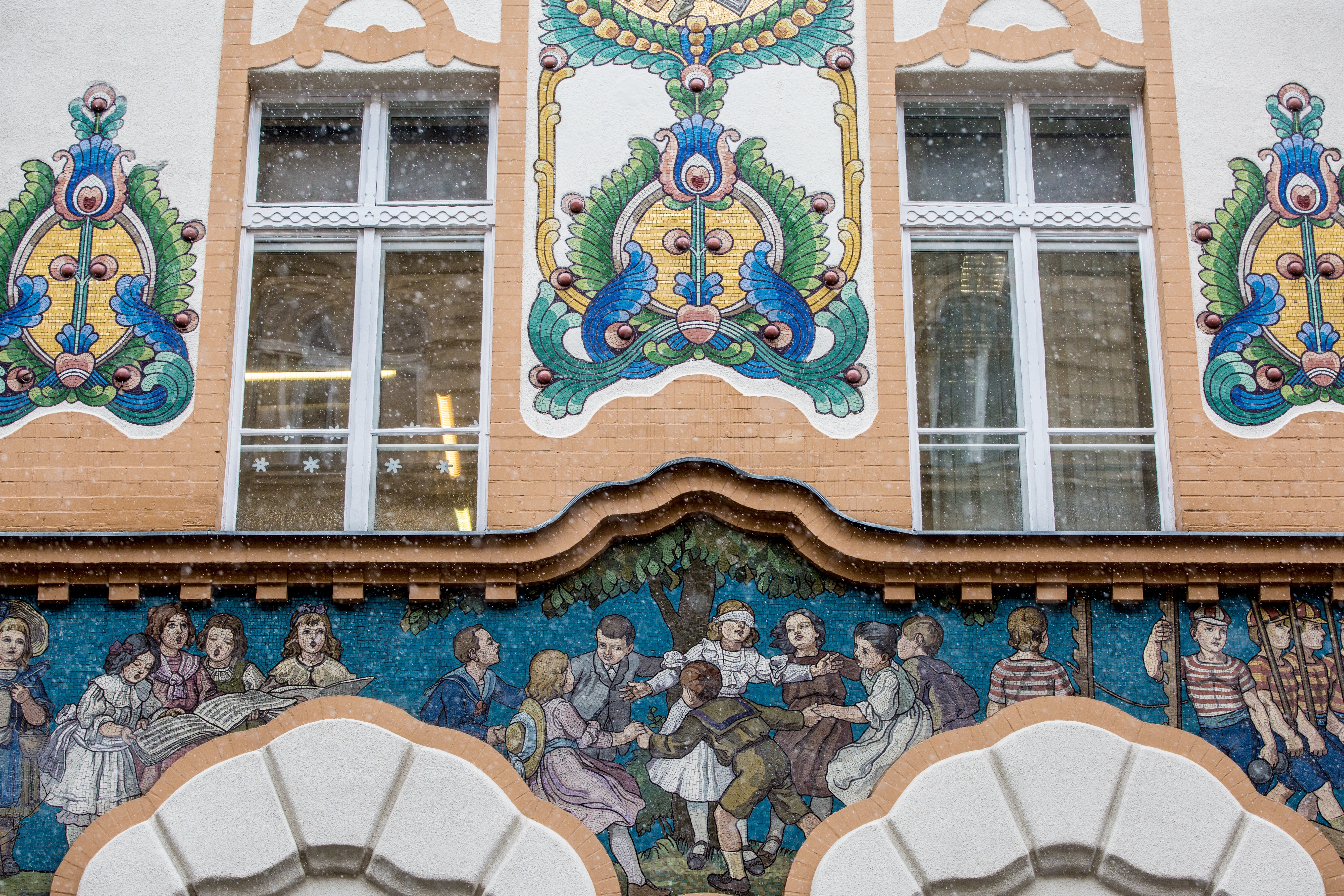Sometimes an era produces such gifted artists that their names become synonymous with the artistic styles they followed. When it comes to Hungarian Art Nouveau, Miksa Róth is one such prominent figure. The elaborate architecture produced in the Hungary of the 1900s would be unimaginable without the works of Miksa Róth, even though he wasn’t an architect himself: he worked as a stained-glass artist and mosaicist.
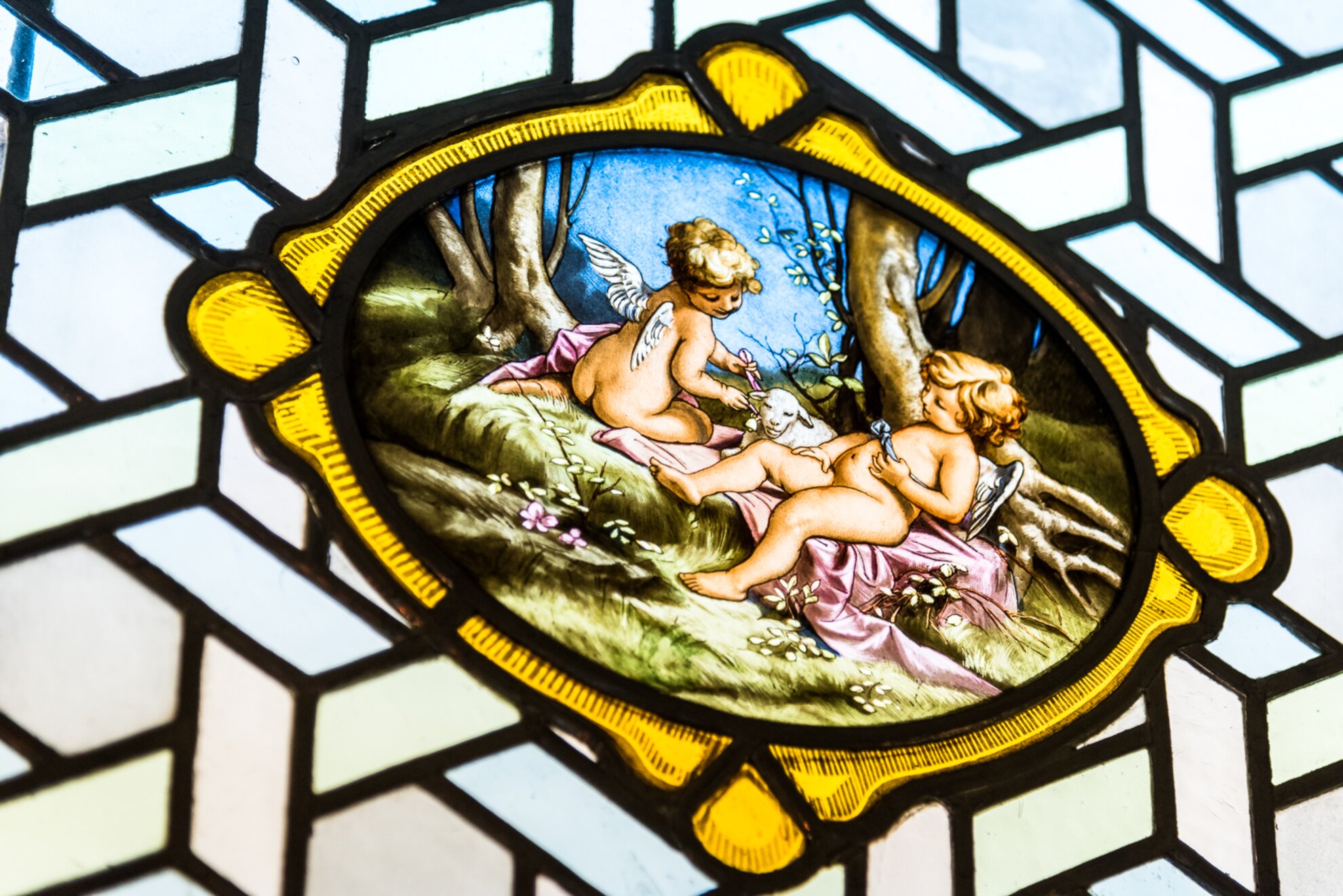
Róth set up his first workshop in 1885, but
fame only came to him a decade later with the 1896 Hungarian Millennial
Exhibition and an assignment to craft the stained-glass artworks for the
Parliament building. Glass artistry was in Róth’s blood as this extraordinary
skill was handed down through generations in his family.
The young boy
apprenticed at his father’s workshop where he learned the ropes of glass-staining
and tempered glass-making. The first buildings he stained windows for – glazed
by his father, Zsigmond Róth – were the Bobula Palace on Andrássy út and the Hall
of Industry for the Millennial Exhibition, later destroyed in World War II.
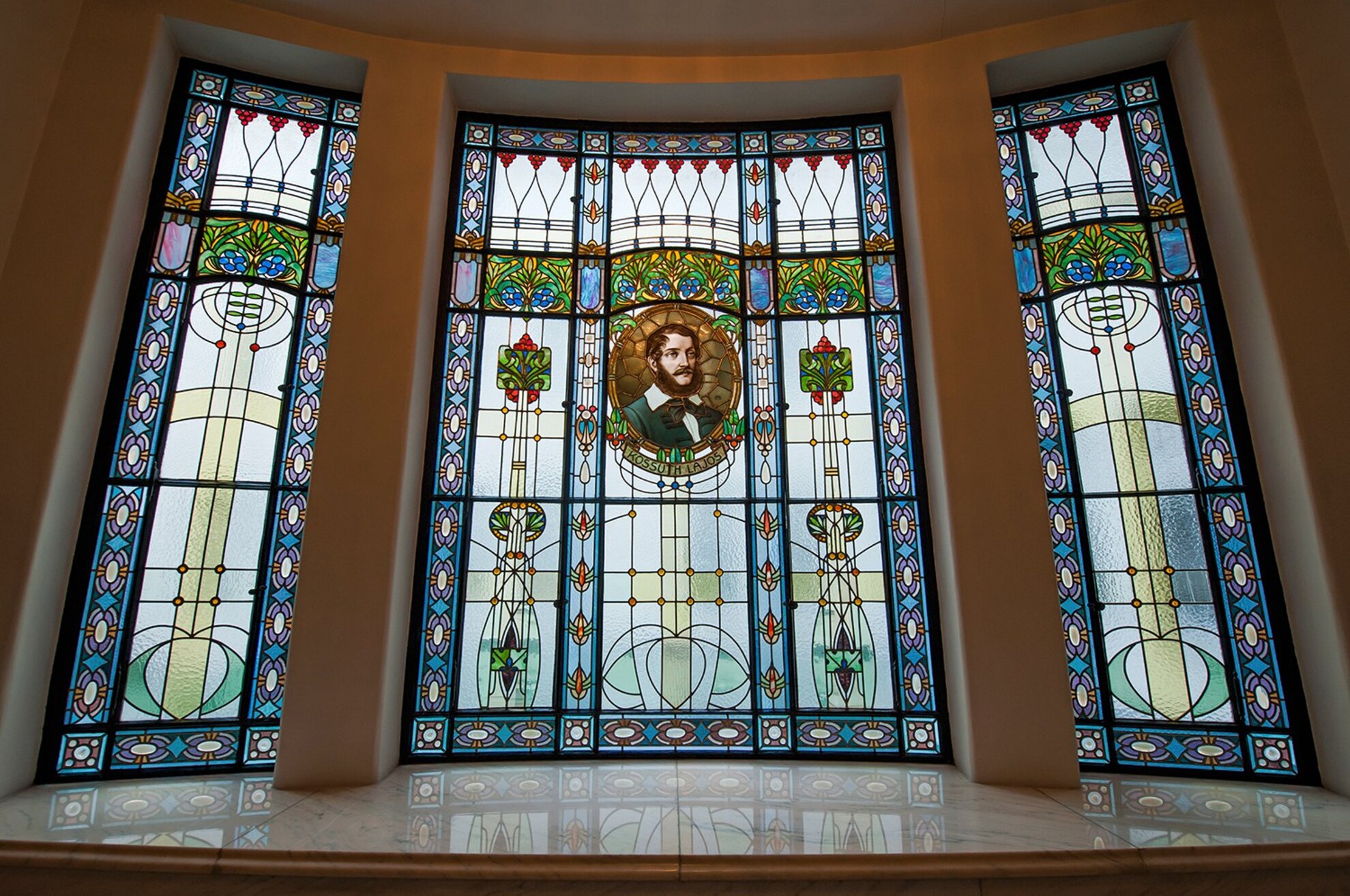
The stained-glass art of Miksa Róth
“My father’s workshop is the setting for many of my fondest childhood memories. He was one of the last artisans of his guild who crafted impeccable but rather simplistic lead-stained glass creations whose glare and shine have been mesmerising me since I was a teenager. This mystical allure captivated me in a way which deeply impacted my entire life. I fell in love with stained glass in that workshop and learned to appreciate this subtle, fragile and prime material which harbours an endless range of magnificent shifting effects only to be brought out by real masters of the artistry. I grew up around this atmosphere, so naturally I became a stained-glass artist.”
These quotes
appeared in an article titled Forty Years of Glass Staining published in
the periodical Hungarian Applied Arts
in which Miksa Róth detailed the history of the art form. After
the golden age of stained glass in the Middle Ages, this genre began to
flourish again around the end of the 19th century.
In Hungary, education
minister Ágoston Trefort played an active role in this resurgence as he
established the Eduard Kratzmann Stained-Glass Institute, named after the leading
Czech exponent put in charge of the operation. Many of the stained-glass
windows in local churches and public buildings were manufactured here.
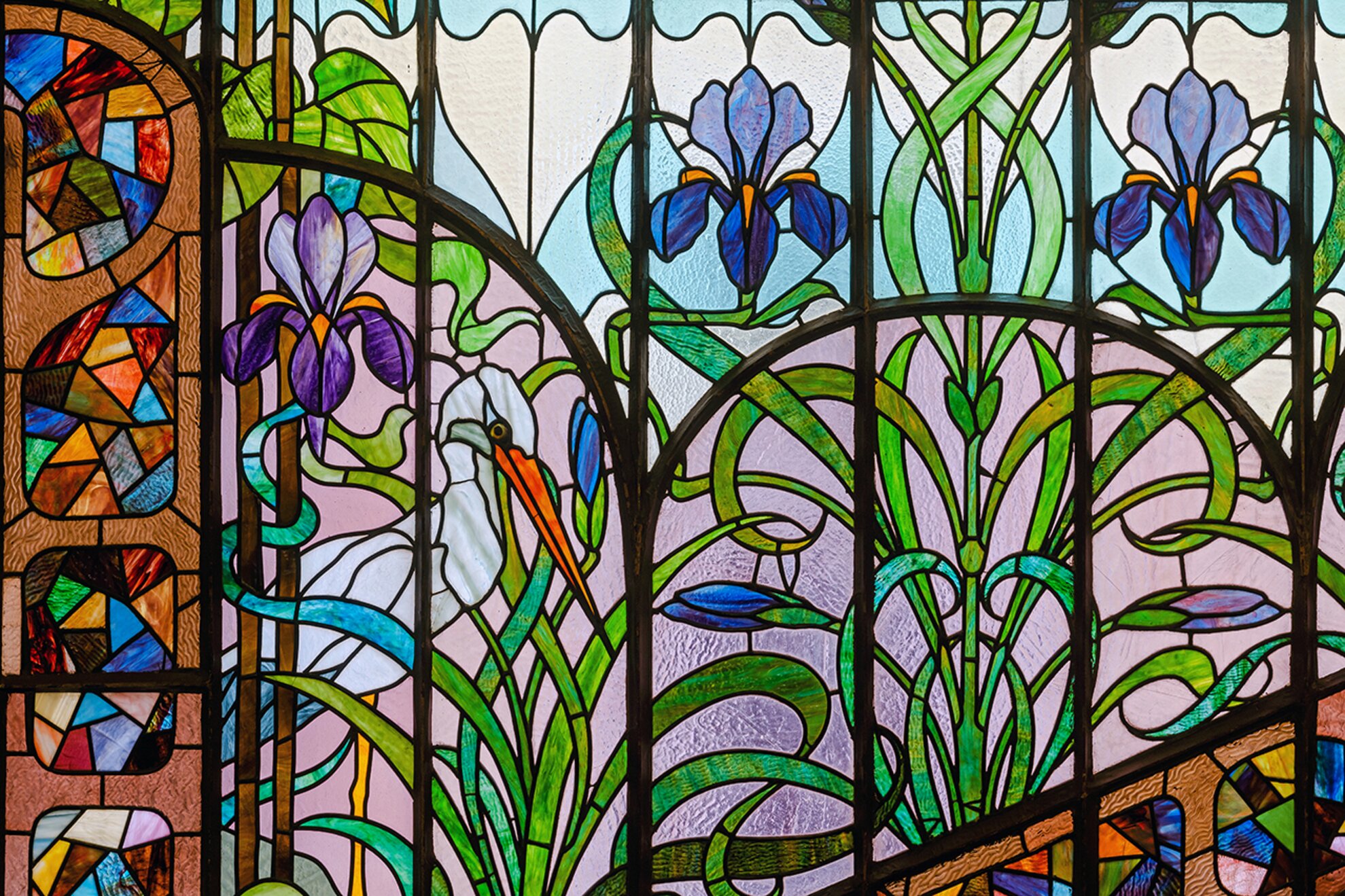
After graduating
from the Upper Industrial Drawing School, Róth embarked on a study trip to
western Europe. He visited Germany, Belgium, England and France, where the
stained-glass windows of Gothic cathedrals left a lifelong impact on his
artistry. As a young professional, Róth adapted the style of his work to the
taste of the Hungarian public, however, he quickly left behind conformism when
Imre Steindl – architect of the Parliament building – invited Róth to join the restoration
project of the Late Gothic church in Máriafalva.
Róth dipped into many artistic
styles throughout his life, but he always considered his Gothic stained-glass
works to be the most outstanding. Despite being initially recognised for
his Historicist creations for the National Archives or Parliament, his name has
eventually become synonymous with Hungarian Art Nouveau and Art Deco.
Róth was led into
the world of Art Nouveau thanks to the invention of Tiffany glass: this opalescent
material very much suited the ornamental features of the style which took the
form of allegoric figures, flowers and twisting vines in the works of the
talented artist.
Róth was also the first to introduce the American Louis
Tiffany’s material to Austria-Hungary. He not only used it for staining but
also for crafting the base material of his mosaics, which were later paired
with eosin-glazed ceramics created by the famous Zsolnay Porcelain Manufactory
in Pécs.
To show the nation’s appreciation, Miksa Róth was awarded the National Gold Medal of Applied Arts and also the title of Knight of the Order of Franz Joseph in Hungary, but he also carried all before him abroad: his Pax mosaic won a silver medal at the 1900 Paris Exposition and later Róth collected a gold medal both at the 1902 Turin Exposition and the 1904 St Louis World Fair. Rumour has it that Róth was even asked to join the international jury of upcoming expositions in order to let someone else win.
His constant desire to learn and work on new methods made him the most prominent figure in the development of a renewed approach towards modern mosaic techniques. Róth learned the skills of mosaic-making in Venice, where he could also let his creative and unconventional ideas unfold: he digressed from the traditional square shape and instead let the desired pattern guide the form and design of the final product. He was also the first artist ever to create a portable mosaic.

Every building of significance in Budapest
built between the end of the 1800s and the early 1900s is decorated with mosaic
or glass elements, many manufactured in Róth’s workshop.
Róth worked side by
side with the top architects of his age: Imre Steindl, Miklós Ybl and Ödön
Lechner are just a few members his élite collaborators. His works are still
present in such magnificent buildings as the Gresham Palace, the Széchenyi
Baths and the Ferenc Deák mausoleum at Kerepesi Cemetery.

The official number of his buildings totals around 70: banks, credit institutions, office blocks, villas and even corporate headquarters. Ranging from tiny decorative ornaments to enormous cupolas, the size of his workspace never determined his devotion to the project: he took on every assignment whose creation delighted him.
His stained-glass creations – which managed to survive the wars – are carefully tucked away from the public eye in private villas, government offices or inside Parliament. Unfortunately, nobody can marvel at Róth’s brilliant Art-Nouveau cupola inside the former Lipótmező Asylum since it closed in 2007.
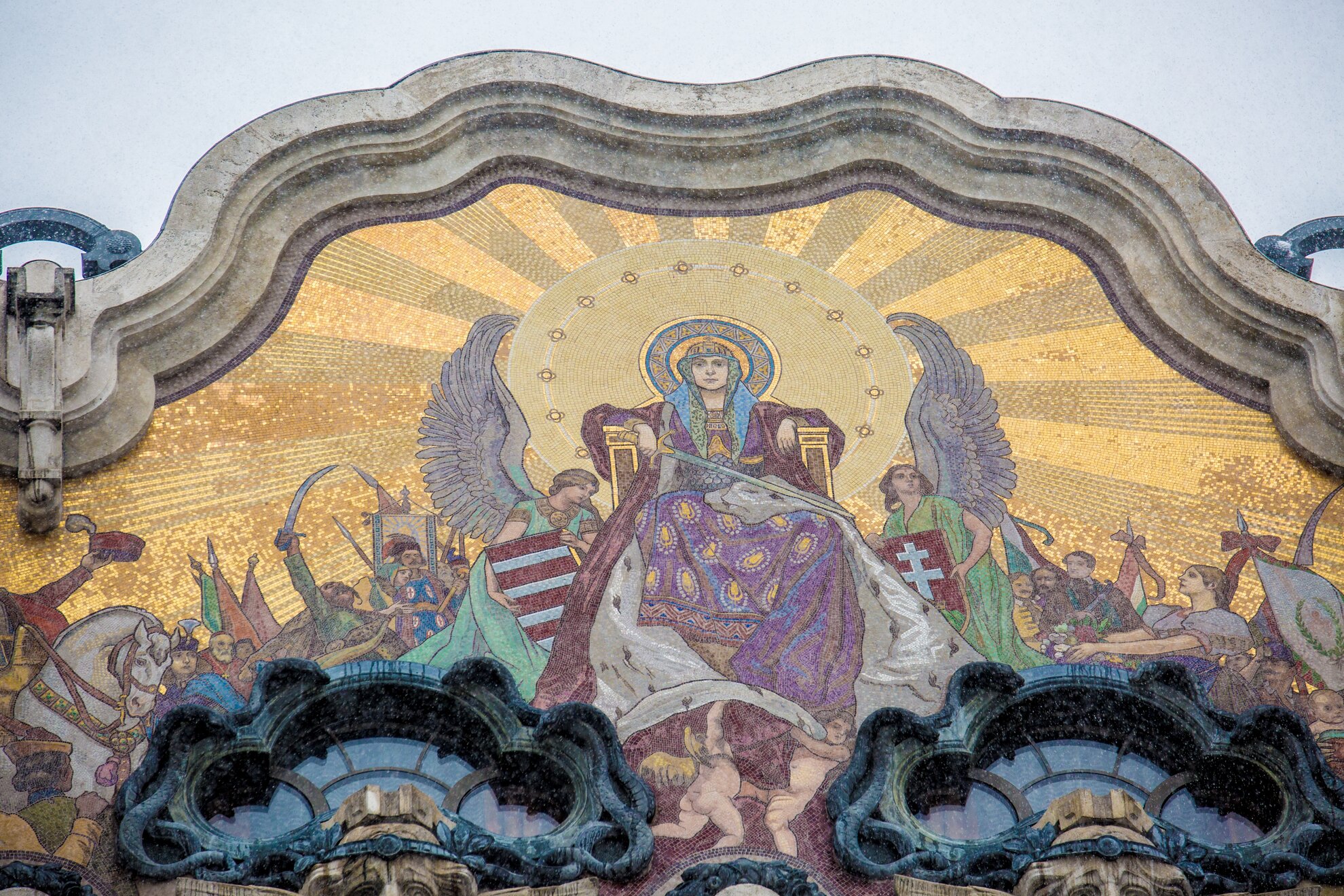
Even so, many of his mosaics are within arm’s reach on the streets of Budapest: the façade of the Török Bank House on Szervita tér has a magnificent mosaic depicting prominent figures of Hungarian history such as Lajos Kossuth, István Széchenyi and Péter Pázmány. The artwork titled Patrona Hungarie is the city’s largest public mosaic which also represents the Hungarian nation’s strong ties to the Virgin Mary.
Throughout his career,
Róth also worked at 30 different locations abroad: churches, royal palaces and
even synagogues, which he preferred not to mention too frequently in the
anti-Semitic climate of his age.
His furthest commission was the result of a collaborative
project with architect Géza Maróti in Mexico City. Their creation is a
monumental Art Nouveau stained-glass cupola depicting the eight muses located
on top of the city’s former national theatre, today the Palace of Fine Arts.
